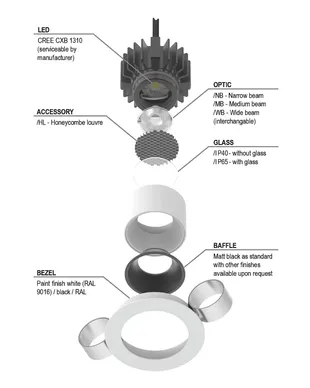Blog: LED lighting and lighting design
Exploring the relationship between LED lighting, lighting design and the characteristics of LEDs

With the advent of LED technology more attention needs to be paid to the way light fittings are controlled. Switching LEDs is very straightforward but dimming is a bit more complicated. There are different ways of dimming (see below for the different dimming types) and the type of LED Driver needs to be matched to the control system in use. It is also recommended to test drivers and dimmers together; even if theoretically compatible, they aren’t always so in practice. We ensure that the fittings and drivers we supply work together well.
Dedicated LED lighting (i.e. not retrofit lamps) isn’t generally compatible with the rotary type resistive dimmers commonly installed in residential properties. These legacy dimmers will need to be replaced with an alternative system to facilitate dimming.